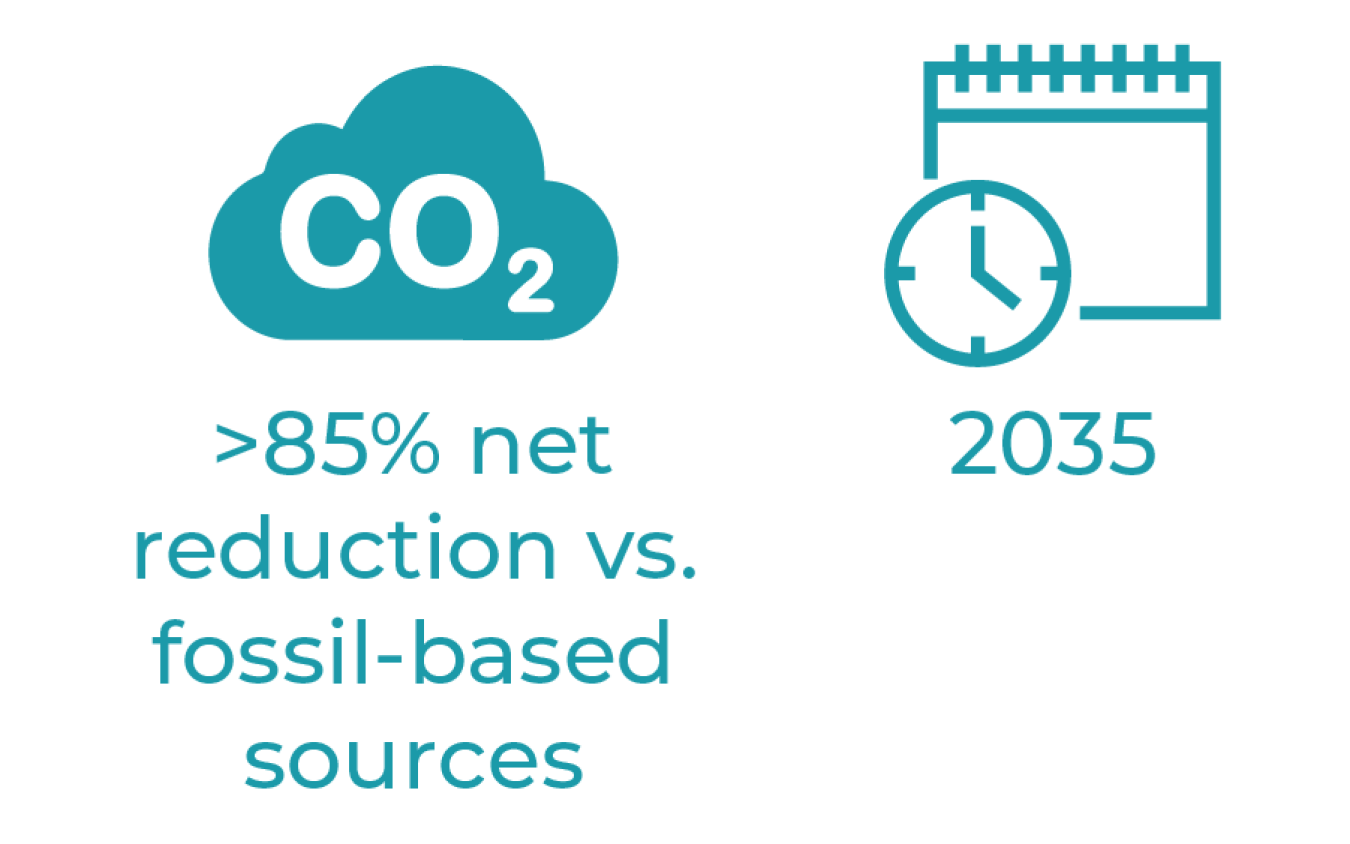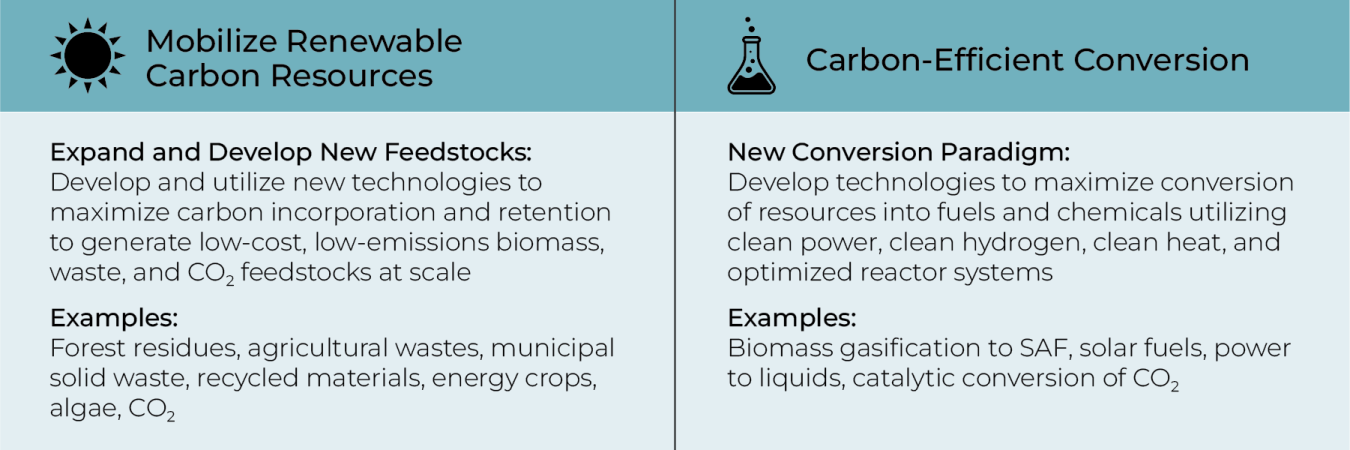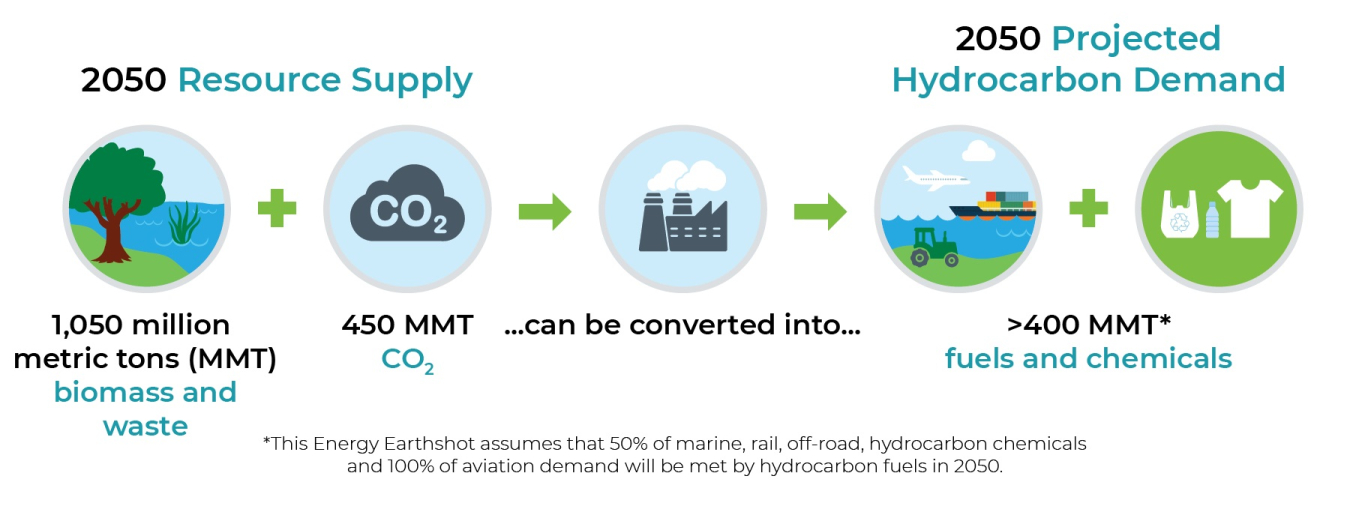Clean Fuels & Products Shot™: Alternative Sources for Carbon-based Products

To significantly reduce the negative impacts of greenhouse gas emissions (GHGs) from carbon-based fuels and products critical to our way of life, the U.S. Department of Energy (DOE) launched the Clean Fuels & Products ShotTM. The seventh initiative associated with DOE’s Energy EarthshotsTM, this Shot focuses on decarbonizing the fuel and chemical industry through alternative sources of carbon to advance cost-effective technologies with a minimum of 85% lower GHG emissions by 2035.

This Shot supports the Sustainable Aviation Fuel Grand Challenge (SAF) and the Biden-Harris administration’s goal of net-zero emissions by 2050 through developing the sustainable feedstocks and conversion technologies necessary to produce crucial fuels and carbon-based products in sectors that are difficult to fully decarbonize. The Clean Fuels & Product ShotTM builds on DOE’s role in the interagency SAF Grand Challenge.

Learn more about DOE’s efforts to decarbonize the fuel and chemical sector:
The Shot aims to dramatically decarbonize the transportation and chemical industries through a staged research, development, and demonstration strategy that will provide the technologies necessary to cut GHGs, establish the United States as a world leader in clean fuel and clean carbon-based chemical production, create and maintain new high-quality jobs, and provide enhanced energy security with robust domestic supply chains.
This Shot has the potential to meet significant portions of projected fuel demands in 2050 using sustainable carbon resources, including:
- 100% of aviation fuel
- 50% maritime fuel
- 50% off-road fuel
- 50% carbon-based chemicals.

Media Kit
For media resources related to the Clean Fuels & Products Shot, including information about the Secretarial announcement, visit the Media Kit
Ultimately, the Clean Fuels & Products ShotTM could eliminate more than 650 million metric tons (MMT) of carbon dioxide equivalent per year and make a critical reduction in GHG emissions on our pathway to net-zero emissions by 2050.
The transportation and industrial sectors remain the most difficult to decarbonize. Fuel sources for long-haul travel (shipping via air, water, or rail) must be energy-dense to be economically practical. The chemical industry has historically relied on high emitting, energy-intensive processes for production of everyday materials. The Shot identifies the ambitious shifts these sectors need to achieve net-zero emissions by 2050.
The Shot aligns with the Biden-Harris administration’s goals to reach net zero emissions economy-wide by 2050 while embracing the Justice40 Initiative and White House Executive Order 13985 to ensure the benefits of the clean energy economy reach all U.S. communities.
For more information or with questions, please contact EE.Media@ee.doe.gov.
Originally shared by the U.S. Department of Energy, May 24, 2023.

